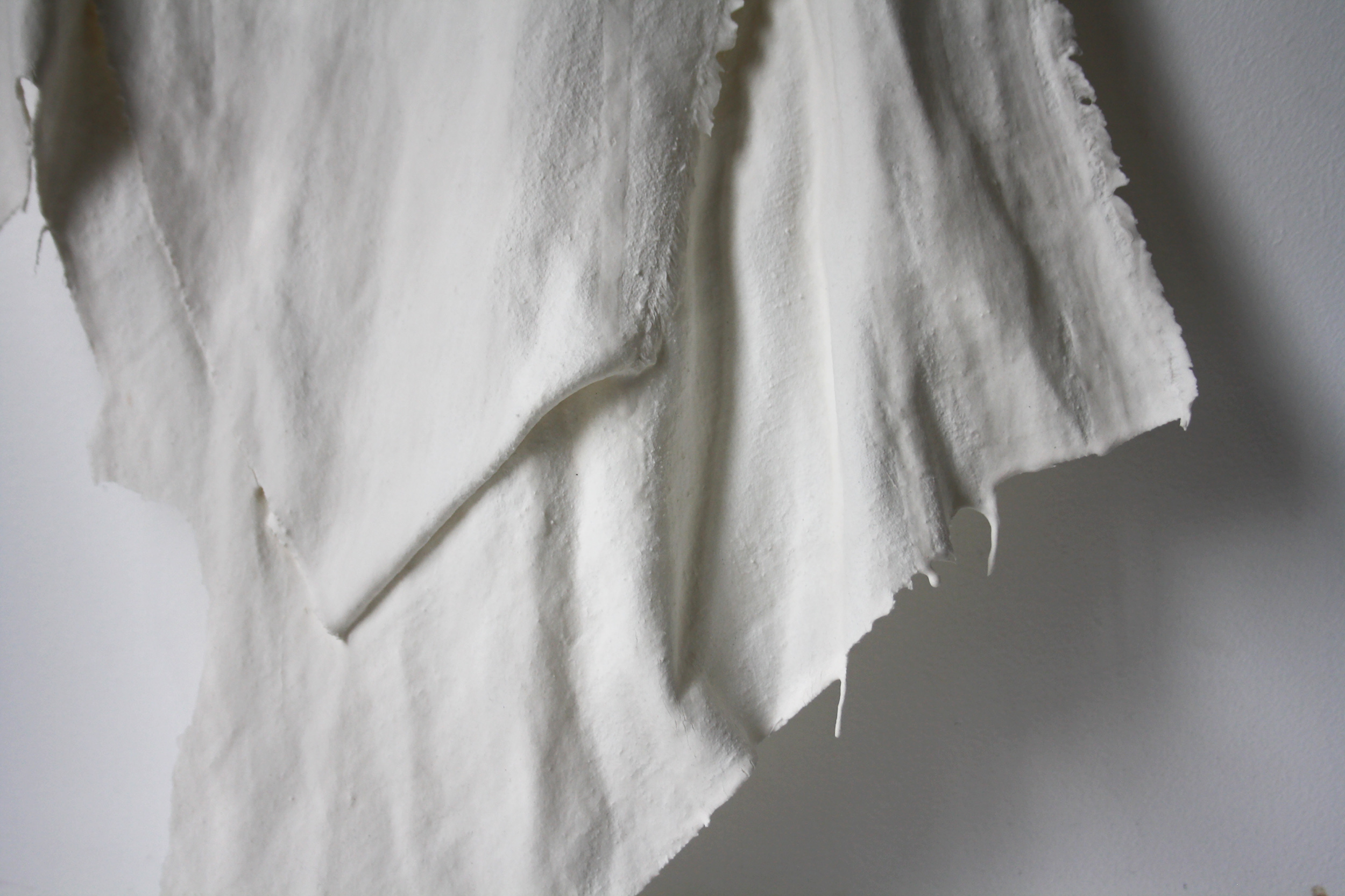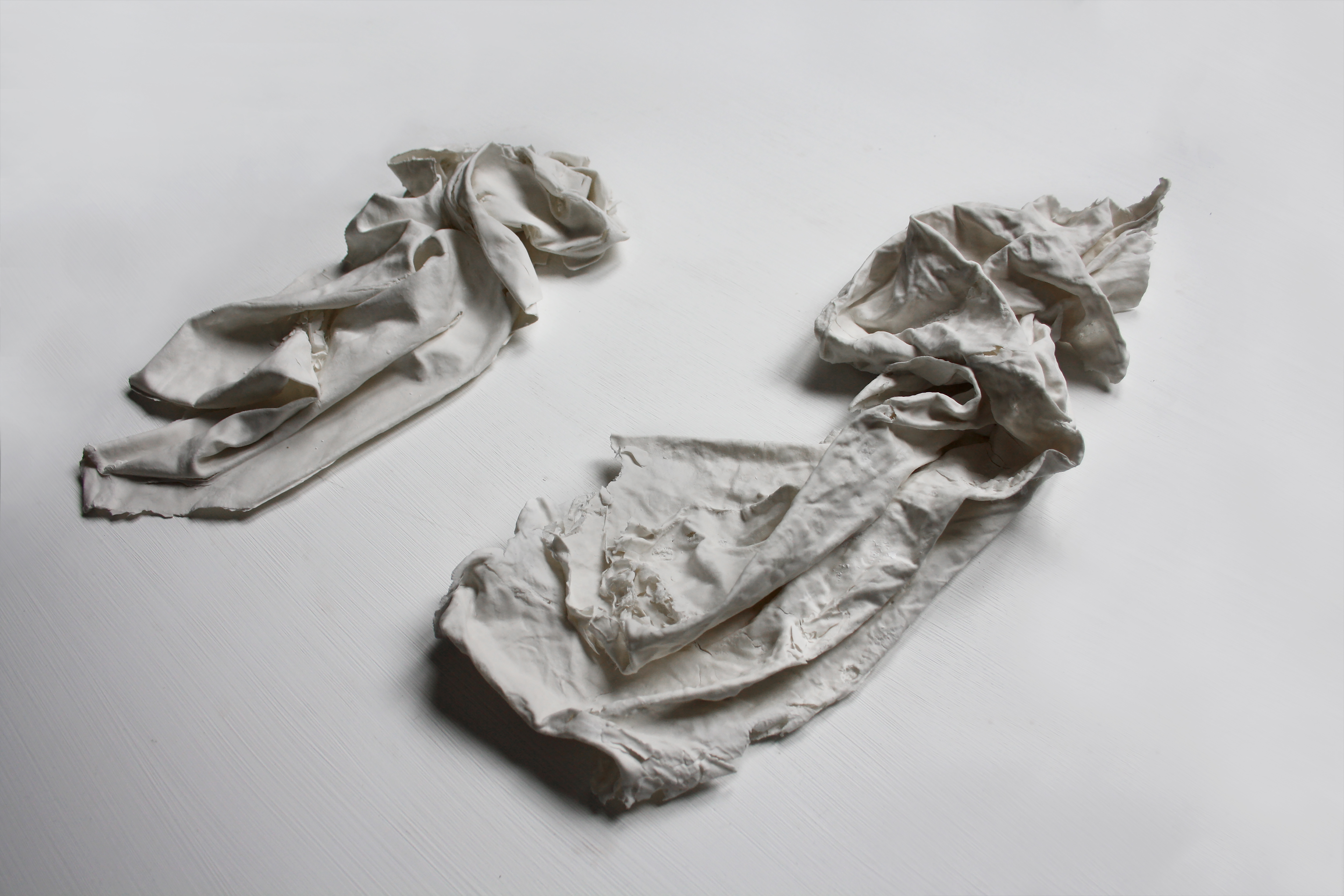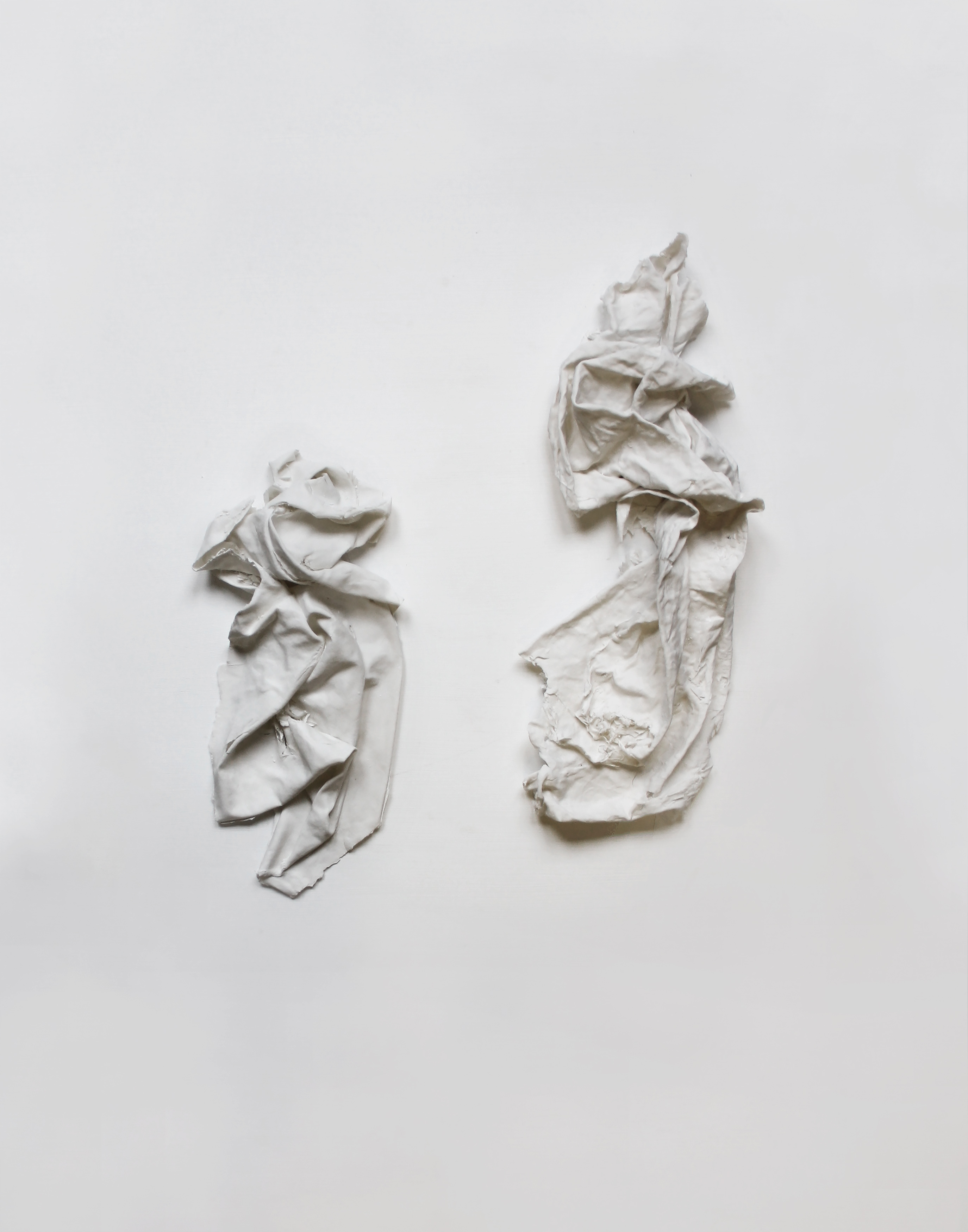Rags
2017
Series of hollow porcelain sculptures cast from anonymous rags gathered at the Rovdino village cemetery, where the artist's destant relatives are buried. The process of casting and firing the porcelain burns up the original fabric, leaving its hollow porcelain shell. "Rags" is part of Ekateria's diploma project for her BFA at Parsons titled "Cloudberry Season". Over the course of two weeklong trips to Rovdino Village, her great-grandfather's home in Archangelsk Region in the Russia.
"In 2016 I first sparked an interest in visiting the birthplace of my great-grandfather. It came instinctively, withdrawn from any anthropological goals of research, or interest in the distinct fates and identities of its current inhabitants. Rather, it surged from an interest linked to the physical earth located at a specific set of geographic coordinates; the aura of a place that has almost completely been erased by time, yet holds the last clues and fragments to my origins.
My first visit to the remote village of Kopeetskaya near Rovdino in the northern Archangelsk region of Russia unfolded like a dream sequence in one of Tarkovsky’s films. A fourteen hour train ride, followed by two hours by car and a river crossing brought me, like into the stalker’s zone, to the source of my family’s history. Stepping ashore, the only evident connections I drew were to the physical elements present there, on that land: the house, the earth, the trees. Each story that led up to that first encounter with the physical experience of this location’s presence had been self-contradictory. Each account of events told to me by my family and by the locals there, winds in on itself, tripping over exaggerated truths passed down as though through a game of broken telephone over four generations. It fuses with superstitions, wives tales and the looming ghostly presence of a soviet history, shaping the filtered impression I came to experience from my time stepping on that soil.
The result, formulated in words and images is murky: an arrangement of testimonies, photographic fragments, video and sound recordings and surreal memories. Yet they all culminate in their connection to the geographic location of Kopeetskaya village. The only experience I seemed to be sure of taking away with me was my memory of the spacial and temporal presence there, of experiencing the smells, sounds and tastes of the earth of my ancestor existing outside of time."
E.C.



